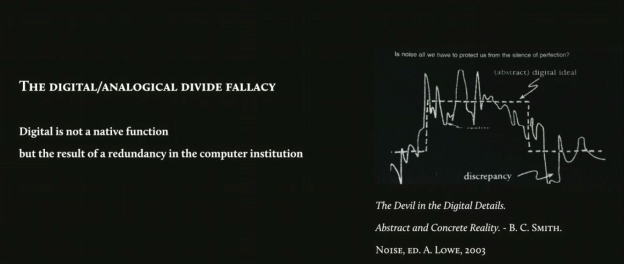Recently Latour outlined his understanding of the digital in an interesting way as part of his plenary lecture at Digital Humanities 2014 conference. He was honest in accepting that his understanding may itself be a product of his own individuation and pre-digital training as a scholar which emphasised close-reading techniques and agonistic engagement around a shared text (Latour 2014). Nonetheless, in presenting his attempt to produce a system of what we might call augmented close-reading in the AIME system, he was also revealing about how the digital was being deployed methodologically and his notion of the digital’s ontological constitution.[1]
Unsurprisingly, Latour’s first move was to deny the specificity of the digital as a separate domain as such, highlighting both the materiality of the digital and its complex relationship with the analogue. He described both the analogue structures that underpin the digital processing that makes the digital possible at all (the materials, the specific electrical voltage structures and signalling mechanisms, the sheer matter of it all), but also the digital’s relationship to a socio-technical environment. In other words, he swiftly moved away from what we might call the abstract materiality of the digital, its complex layering over an analogue carrier and instead reiterated the conditions under which the existing methodological approach of actor-network theory was justified – i.e. digital forms part of a network, is “physical” and material, requires a socio-techical environment to function, is a “complex function”, and so on.
Read more: On Latour’s Notion of the Digital

